The emergency launch abort system (LAS) has been installed on NASA’s pathfinding Orion crew capsule to prepare for its first launch – now just under two months away.
Technicians and engineers working inside the Launch Abort System Facility (LASF) at NASA’s Kennedy Space Center in Florida joined the LAS to the top of the Orion EFT-1 crew module on Friday, Oct. 3, 2014.
Attaching the LAS is one of the final component assembly steps leading up to the inaugural uncrewed liftoff of the state-of-the-art Orion EFT-1 spacecraft in December.
The maiden blastoff of Orion on the EFT-1 mission is slated for December 4, 2014 from Space Launch Complex 37 (SLC-37) at Cape Canaveral Air Force Station in Florida atop the triple barreled United Launch Alliance (ULA) Delta IV Heavy booster.
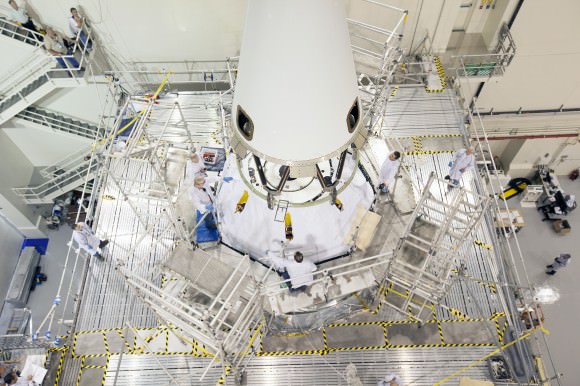
Orion is NASA’s next generation human rated vehicle that will eventually carry America’s astronauts beyond Earth on voyages venturing farther into deep space than ever before – beyond the Moon to Asteroids, Mars and other destinations in our Solar System.
Indeed last week and this past month has been an extremely busy time for Orion’s launch preparations. And I’ve been present at KSC reporting first hand on many Orion processing events over the past few years.
Assembly of the Orion EFT-1 capsule and stacking atop the service module was completed at KSC in September. I witnessed the rollout of the Orion crew module/service module (CM/SM) stack on Sept. 11, 2014 on a 36 wheeled transporter from its high bay assembly facility in the Neil Armstrong Operations and Checkout Building and transport to the Payload Hazardous Servicing Facility (PHFS) for fueling. Read my Orion move story – here.
Running in parallel to processing of the Orion spacecraft is the processing of the triple barreled United Launch Alliance Delta IV Heavy. The Delta rocket assembly was completed by late September and detailed from my visit to the ULA Horizontal Integration Facility (HIF)- here.
The Delta rocket was moved to its Cape Canaveral launch pad overnight Sept 30 and hoisted at the pad on Oct. 1. Read my story – here.
“We’ve been working toward this launch for months, and we’re in the final stretch,” says former shuttle commander and Kennedy Space Center Director Bob Cabana.
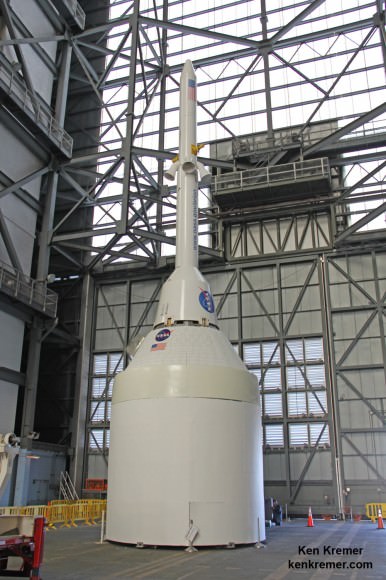
The LAS stands at the very top of the Orion launch stack, bolted above the crew module, and it plays a critically important role to ensure crew safety.
In case of an emergency situation, the LAS is designed to ignite within milliseconds to rapidly propel the astronauts inside the crew module away from the rocket and save the astronauts lives. The quartet of LAS abort motors would generate some 500,000 pounds of thrust to pull the capsule away from the rocket.
For the EFT-1 mission, the LAS will be mostly inactive since no crew is aboard.
Thus the abort motors are inert and not filled with solid fuel propellant. However the jettison motors will be active in order to pull the LAS and Orion’s nose fairing away from the spacecraft just before Orion goes into orbit.
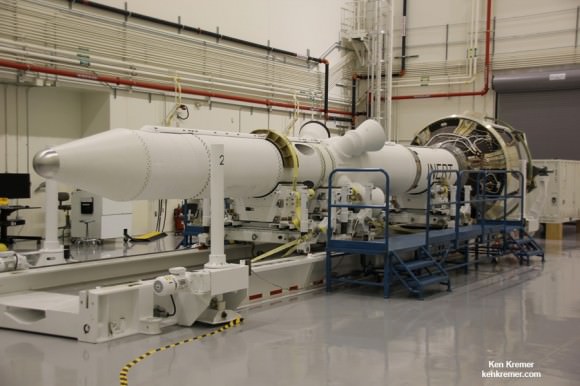
The LAS is one of the five primary components of the flight test vehicle for the EFT-1 mission and will be active on future Orion flights.
The Orion stack is scheduled to remain inside the LASF until mid-November. At that time when the Delta IV Heavy rocket is ready for integration with the spacecraft, Orion will be transported to pad 37 and hoisted atop the rocket.
The Delta IV Heavy became the world’s most powerful rocket upon the retirement of NASA’s Space Shuttle program and is the only rocket sufficiently powerful to launch the Orion EFT-1 spacecraft.
The first stage generates some 2 million pounds of liftoff thrust.
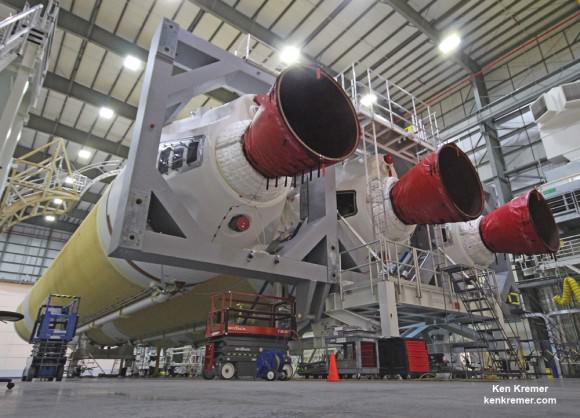
The two-orbit, four and a half hour EFT-1 flight will lift the Orion spacecraft and its attached second stage to an orbital altitude of 3,600 miles, about 15 times higher than the International Space Station (ISS) – and farther than any human spacecraft has journeyed in 40 years.
“This mission is a stepping stone on NASA’s journey to Mars,” said NASA Associate Administrator Robert Lightfoot during the boosters unveiling earlier this year at the Cape. “The EFT-1 mission is so important to NASA. We will test the capsule with a reentry velocity of about 85% of what’s expected by [astronauts] returning from Mars.”
“We will test the heat shield, the separation of the fairing and exercise over 50% of the eventual software and electronic systems inside the Orion spacecraft. We will also test the recovery systems coming back into the Pacific Ocean.”
Stay tuned here for Ken’s continuing Orion, SLS, Boeing, Sierra Nevada, Orbital Sciences, SpaceX, commercial space, Curiosity, Mars rover, MAVEN, MOM and more Earth and planetary science and human spaceflight news.
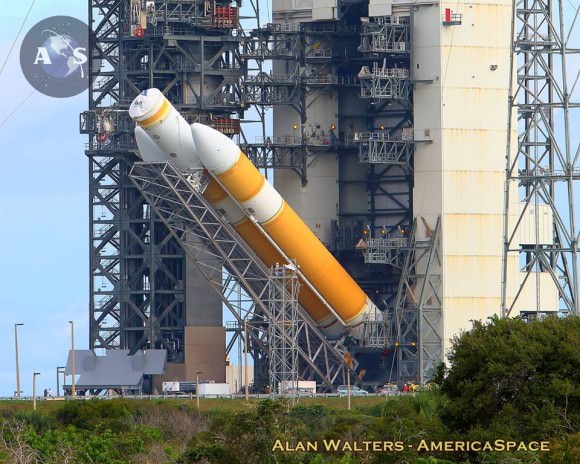
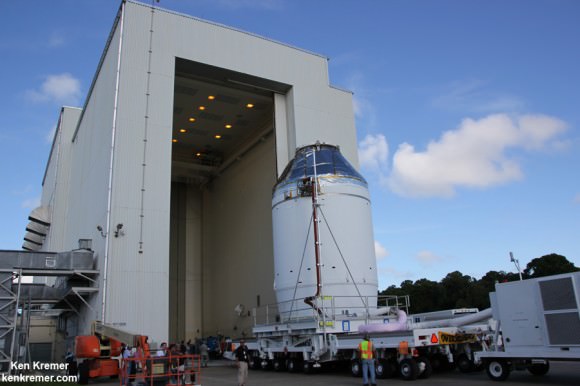
…………….
Learn more about Orion, Space Taxis and NASA Human and Robotic Spaceflight at Ken’s upcoming presentations
Oct 14: “What’s the Future of America’s Human Spaceflight Program with Orion and Commercial Astronaut Taxis” & “Antares/Cygnus ISS Rocket Launches from Virginia”; Princeton University, Amateur Astronomers Assoc of Princeton (AAAP), Princeton, NJ, 7:30 PM
Oct 23/24: “Antares/Cygnus ISS Rocket Launch from Virginia”; Rodeway Inn, Chincoteague, VA

